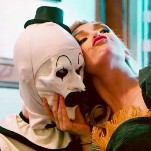How To Give Barbie An Afro (And Call It A Halo Instead)
LatestPeople who were part of the Black Pride movement of the 1960s also took pride in wearing their hair natural instead of using straightening combs or chemical relaxers. Their pride in African culture was an Afro-centric view that really shook (read: terrified) most middle-class Americans. The way they wore their hair was soon dubbed an “Afro,” which was shorthand for Afro-centric.
Fifty years later, people often shorten the word and say “‘Fro.” It seems to me that the word “‘Fro” more often than not, comes out of the mouths of drunk fraternity boys making perilously lame jokes, and that bugs me.
I recently decided to start calling it a Halo instead. Why? Well, first of all, because the hairstyle I remember from my elementary school days was a monument to supreme coolness.
Only a select few of my classmates had the hairstyle — probably because their parents considered the hairstyle controversial, as so many people in the early ’70s did.
Halos, believe it or not, were the sagging pants of a bygone era. They were a way of telling everyone over a certain age or of a certain demographic that you didn’t care what they thought was appropriate hair. Halos were a big, cool middle finger to the establishment.
When I saw someone with a Halo, I might as well have heard Ave Maria playing. I was in the presence of someone whom I had decided was divine.
My elementary school classmate Margaret’s depictions of her Afro-ed family only added to the mystique. When she drew a row of her brothers and sisters with bell-bottomed jeans, their eyebrows and noses were constructed from a single unbroken line. The line snaked over one eye, down the inner cheek, made a curved W for the wings, nostrils and tip of the nose and rose back up the other side to delineate the other eyebrow.
Their heads were topped by perfectly circular Halos.
Her family looked exactly like 7th Century Coptic Christian Art to me and I came to believe it was no coincidence. (The image at left isChrist and Abbot Mena. Late 6th or early 7th century.
Housed at the Louvre, in an area devoted to Coptic Christian art)
-

-

-

-

-

-

-

-

-

-

-

-

-

-

-

-

-

-

-

-

-

-

-

-

-

-

-

-

-

-

-

-

-

-

-

-

-

-

-

-








































